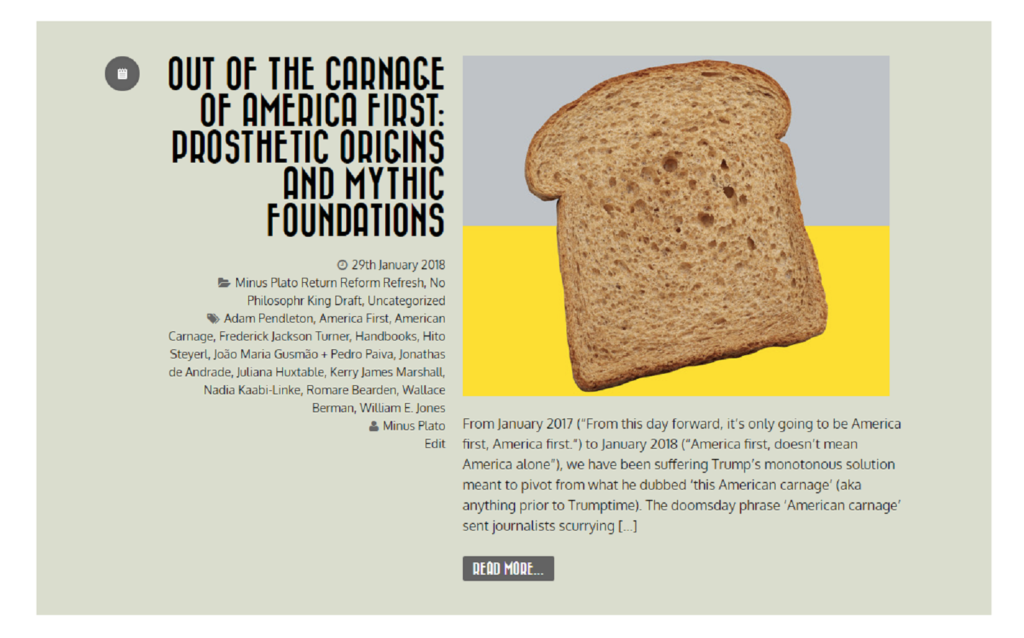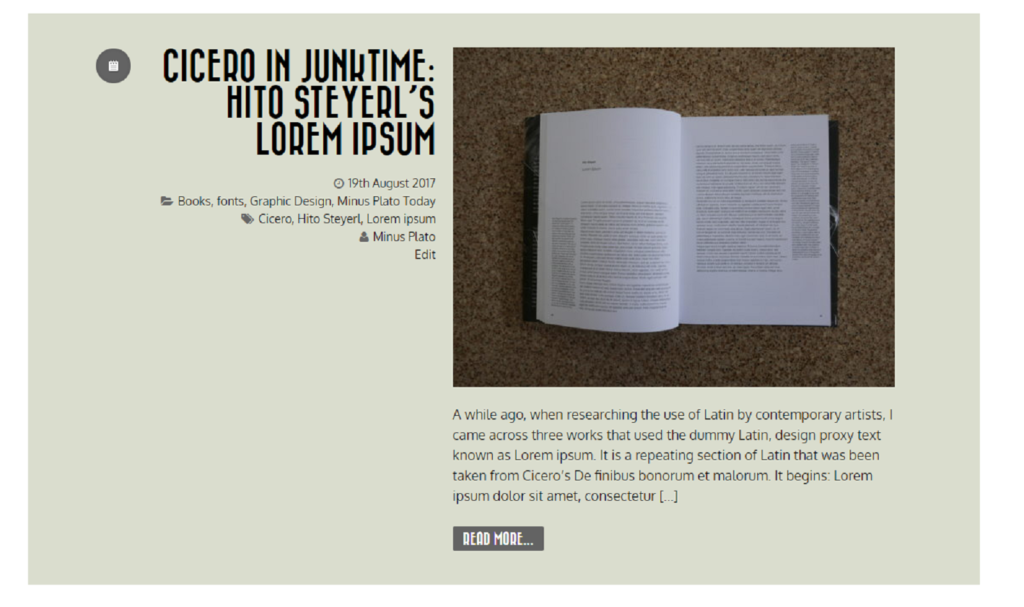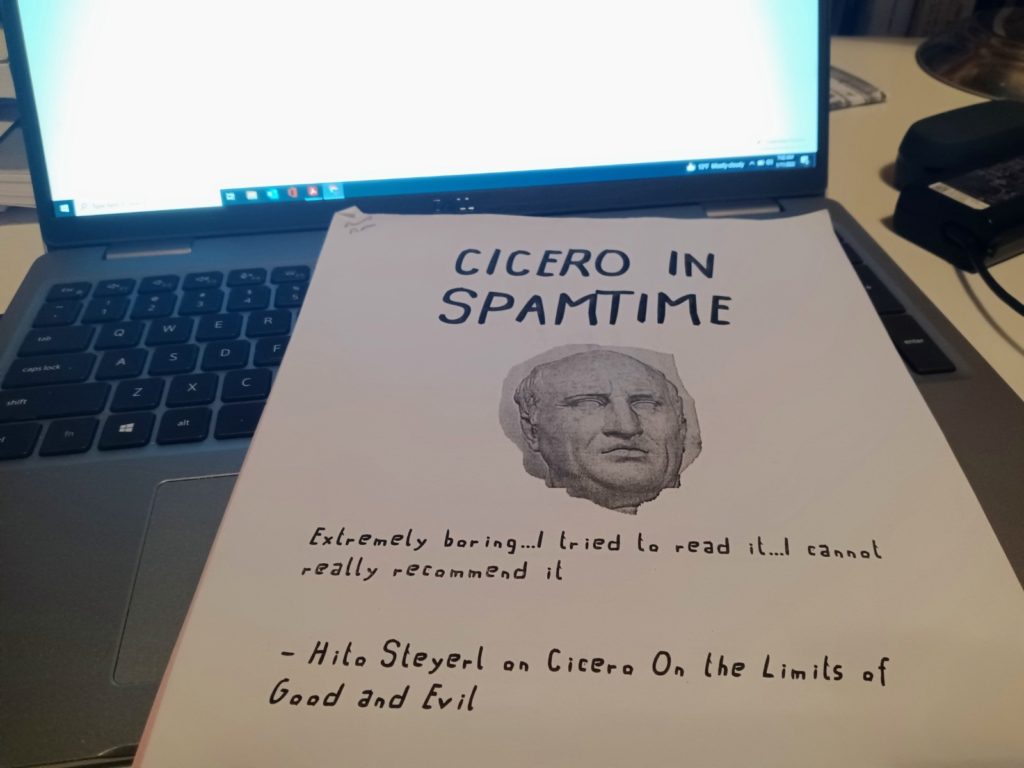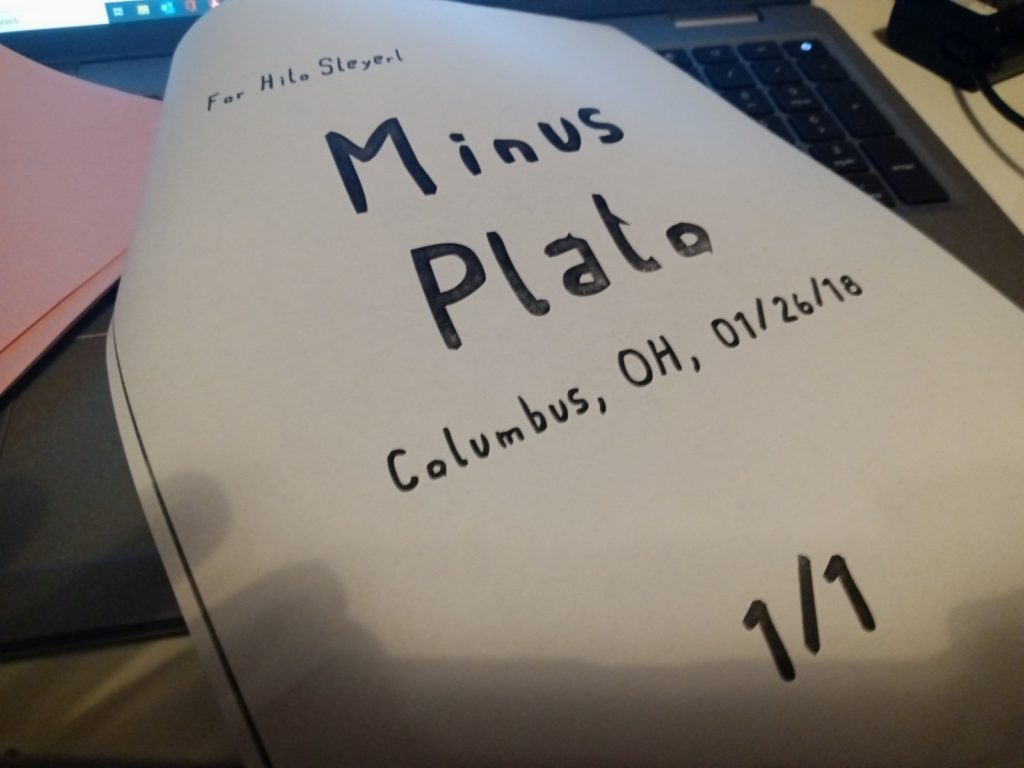At the ensuing gathering at Ann Hamilton’s studio, with art faculty, MFA students and other guests, you sat next to Steyerl who told you that they were trying to keep on German time so as to avoid jet-lag. She seemed somewhat melancholy throughout her visit, and you recall more than one person being disappointed by her presentation of her work, as if this major artist was just going through the motions. Yet you vividly recall, and you have a scribbled note in a notebook to support your memory, that Steyerl’s mood and approach to the selection of old work, were both direct and engaging commentary on that present moment. The first question Steyerl received following her presentation – by your OSU colleague Roger Beebe, was to ask bluntly why this selection? Her response was initially dismissive, explaining how it was intuitive and made 15 minutes before presenting.
Yet you sensed that this was a ruse on her part and you recalled the pertinence of the first work she showed her 1998 film The Empty Center, comprising archive footage of the area of Potsdamer Platz, Berlin, along with her own footage shot between 1990 and 1997, including the fall of the Berlin Wall. The artist’s voiceover in the film described how old borders disappear and new ones emerge, and after the film ended, she commented (according to your scribbled notes) how the film ‘seems so obvious now’ and how ‘it is not so natural anymore’ for walls to disappear. Rather than a simple moment of freedom, Steyerl sees the fall of the Berlin Wall as a moment that created the widespread use of walls elsewhere in the world. She went on to comment on how the Berlin Wall had ‘dispersed all over the world’, like ‘new seeds’ (a phrase that stuck you enough to underline and to cite a blogpost you wrote the following day (with a reference to a post from the previous year of daily posting on Wallace Berman):

Even if we admit that we are surrounded by fear, terror and carnage, and agree with Hito Steyerl, who sees in the Berlin Wall as the original wall, which in its destruction scattered the seeds of the walls of today’s world (realized and imaginary), still we must also follow Wallace Berman’s Semina in generating our own ways of understanding the multiplicity and diversity of our various origin stories (Jan. 12)
In this commentary on her early film, you obviously understood a reference to the Trump administration’s zealous efforts to build the border wall on the US-Mexico border.
At the same time, in response to Roger’s question about the selection of her work, she expressed a present preoccupation with the ongoing war in Syria, implying that had determined her selection.
The timing of Steyerl’s talk aligned with the launch of the so-called Afrin offensive (January-March 2018) led by the Turkish army against the Syrian Democratic Forces in the Afrin district of northwestern Syria – a Kurdish majority region. By the end of the offensive, the UN would report 150,000 Kurdish refugees in camps and other agencies reported 300,000 displaced Kurdish people and the arrival of over 30,000 settlers into the region. As would emerge in Steyerl’s activist work in the following years, her solidarity with the Kurds of northwestern Syria was grounded in the women of Rojava (the canton where Afrin is located). In October 2019, Steyerl would perform a work called ‘Women for Rojava’, in which four women alternate between acting as refugees, German politicians, and themselves while moving between speaking German, Kurdish, and English, as a critique of Germany and Turkey’s mistreatment of Kurdish refugees and the German government inaction as well as weapons trading in the region.
Back to the Wexner screening, you remember being moved by Steyerl’s second film November (2004) that focuses on her friend Andrea Wolff who was killed as part of her involvement in the Kurdish liberation movement in Turkey and a member of the Kurdish Workers’ party (PKK). According to your notes, following the screening of this film, Steyerl stated how ‘the story of this was is still ongoing’ and no doubt this was a reference to her preoccupation of with the Syrian War and the violence against Kurdish people and the women-led resistance movement.
Looking back your asking Steyerl to sign your spam – as a footnote to her essay ‘The Spam of the Earth: Withdrawal from Representation’ – and, in exchange, you gave her a Minus Plato edition (1/1) called Cicero in Spamtime based on a blogpost you had written in August 2017.

Yet now, looking back to this moment of Steyerl’s visit through the portal of the signed can of spam on your desk, as I make you sift through the books in your library to write these daily posts, a section of that original essay called ‘Walkout’ that seems somehow more pertinent than ever. Not just for the present moment, but also for the role that Steyerl was asked to play at the Wexner and Ann Hamilton’s studio by an artworld and academy that wants the artist to stand in for their work, as a kind of proxy image, and to perform it for them before their eyes. Yet artist’s like Steyerl resist, they strike, they walk out, even as they are standing right before you. The question remains: what will you do with this monumental act of resistance before you?


